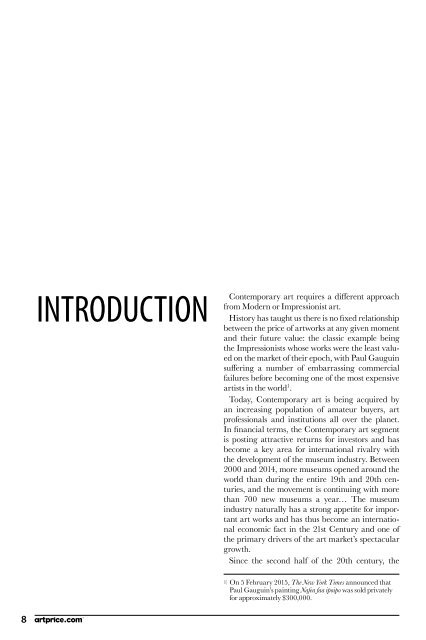THE contemporary
rCstpm
rCstpm
You also want an ePaper? Increase the reach of your titles
YUMPU automatically turns print PDFs into web optimized ePapers that Google loves.
INTRODUCTION<br />
Contemporary art requires a different approach<br />
from Modern or Impressionist art.<br />
History has taught us there is no fixed relationship<br />
between the price of artworks at any given moment<br />
and their future value: the classic example being<br />
the Impressionists whose works were the least valued<br />
on the market of their epoch, with Paul Gauguin<br />
suffering a number of embarrassing commercial<br />
failures before becoming one of the most expensive<br />
artists in the world 1 .<br />
Today, Contemporary art is being acquired by<br />
an increasing population of amateur buyers, art<br />
professionals and institutions all over the planet.<br />
In financial terms, the Contemporary art segment<br />
is posting attractive returns for investors and has<br />
become a key area for international rivalry with<br />
the development of the museum industry. Between<br />
2000 and 2014, more museums opened around the<br />
world than during the entire 19th and 20th centuries,<br />
and the movement is continuing with more<br />
than 700 new museums a year… The museum<br />
industry naturally has a strong appetite for important<br />
art works and has thus become an international<br />
economic fact in the 21st Century and one of<br />
the primary drivers of the art market’s spectacular<br />
growth.<br />
Since the second half of the 20th century, the<br />
1) On 5 February 2015, The New York Times announced that<br />
Paul Gauguin’s painting Nafea faa ipoipo was sold privately<br />
for approximately $300,000.<br />
8


